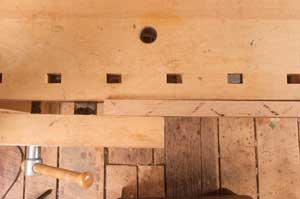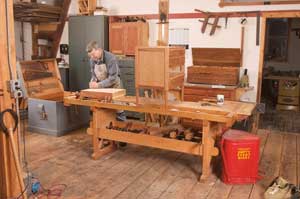Modern benches generally have spindle vises with two metal guide spindles and a metal screw between them. They are usually less than 2” below the benchtop. To grip anything more than this distance, it has to be to one side of a spindle, usually the right side. The front jaw of the vise cocks when tightened, ruining the corner of the work and giving a indeterminate hold. This is not progress.

We live in the era of the Texas bench, with “high” being in vogue. Sadly, this is a perceived need by the public and does nothing for functionality if you use hand tools and most power tools. Proper bench height is somewhere between knuckle and wrist height with your arms loosely at your side. Higher makes such things as planing very difficult and much more tiring. The great thing about the human back is that it bends, and bending forward slightly during planning is highly beneficial. I have two Euro benches with traditional shoulder vises. The first came at the right height. With the second, I bought the lowest example the importer had but still had to cut 1” out of the legs.

As stated in Part 1, well-meaning engineers make changes for reasons of ease of manufacturing and perceived utility. This perception is not born of deep knowledge of woodworking. They may never have used hand tools at all. Most woodworkers think they are buying what they need and have never used a proper bench. Therefore the state of workbenches is declining! Don’t be afraid to complain.
– Ernie Conover






